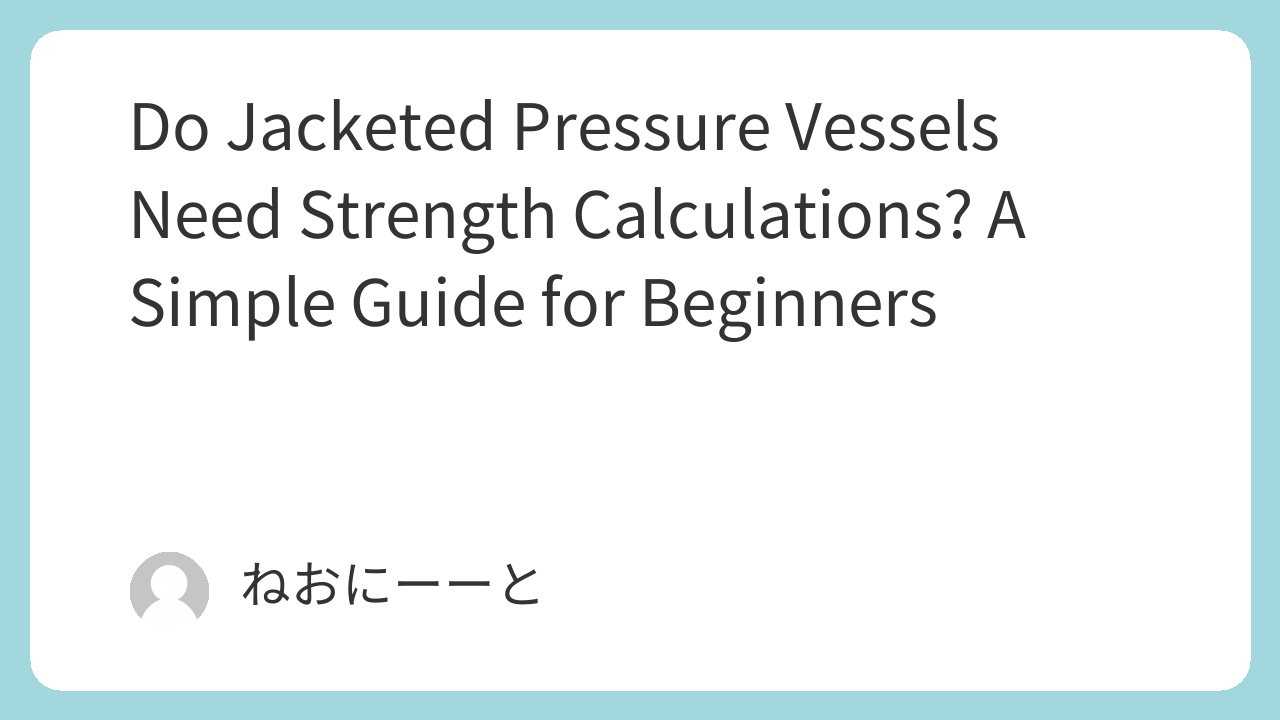Jacketed pressure vessels are common in chemical plants. They help heat or cool the process fluid by surrounding the main vessel with a second shell — the “jacket.”
But here’s a common question for engineers and beginners:
Do we need to calculate the strength of the jacket part too?
In this article, we’ll explain:
- What a jacketed vessel is
- When strength calculations are necessary
- Why the jacket’s design matters for safety
Let’s make this simple and easy to understand.
What Is a Jacketed Pressure Vessel?
A jacketed pressure vessel has two main parts:
- Inner Vessel (Shell): Holds the process fluid.
- Jacket (Outer Shell): Contains heating or cooling fluid (like steam or water).
The jacket allows temperature control without directly touching the process fluid. It’s often used in:
- Chemical reactors
- Fermenters
- Heat exchangers
Is the Jacket a Pressure Vessel Too?
Yes — sometimes.
If the jacket handles pressurized fluid (like steam), it also behaves like a pressure vessel, and this means:
You may need to check its strength, just like the inner shell.
When Do You Need to Do Strength Calculations?
You should check the jacket strength if:
- The jacket operates under pressure (e.g., steam, compressed water)
- It is not fully supported by the inner shell
- It could collapse due to vacuum conditions
- You are following pressure vessel codes (like ASME, PED, JIS)
If the jacket only handles low pressure, and is fully supported, calculations may be simplified or skipped — but this depends on local regulations.
Types of Jackets and Their Considerations
There are several jacket types:
- Conventional Jackets
- Full shell around the vessel
- Needs thickness check (internal/external pressure)
- Dimple Jackets
- Thin plate with spot welds
- Often designed using manufacturer data
- Half-Pipe Coils
- Pipes welded around the vessel
- Calculations often required for coil strength
Each type has different rules, so design codes matter.
Example: What Happens Without a Proper Design?
If you skip the strength check:
- The jacket may deform or collapse
- You could fail inspections
- Worst case: a safety incident
That’s why even if jackets seem “secondary,” their design is important.
Summary
Let’s review the key points:
- Jacketed vessels help control temperature in process equipment.
- If the jacket handles pressure, treat it like a pressure vessel.
- You may need strength calculations, especially for high-pressure or vacuum conditions.
- Always check local regulations and follow the proper design code (like ASME).
Even if you’re new to equipment design, understanding jacket strength is a smart step toward safe and effective systems.

Comments